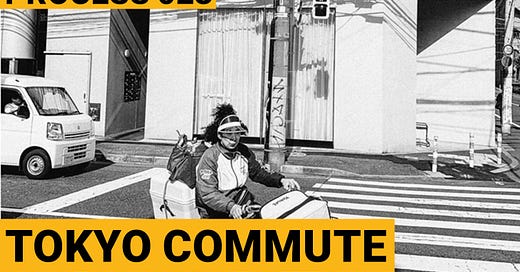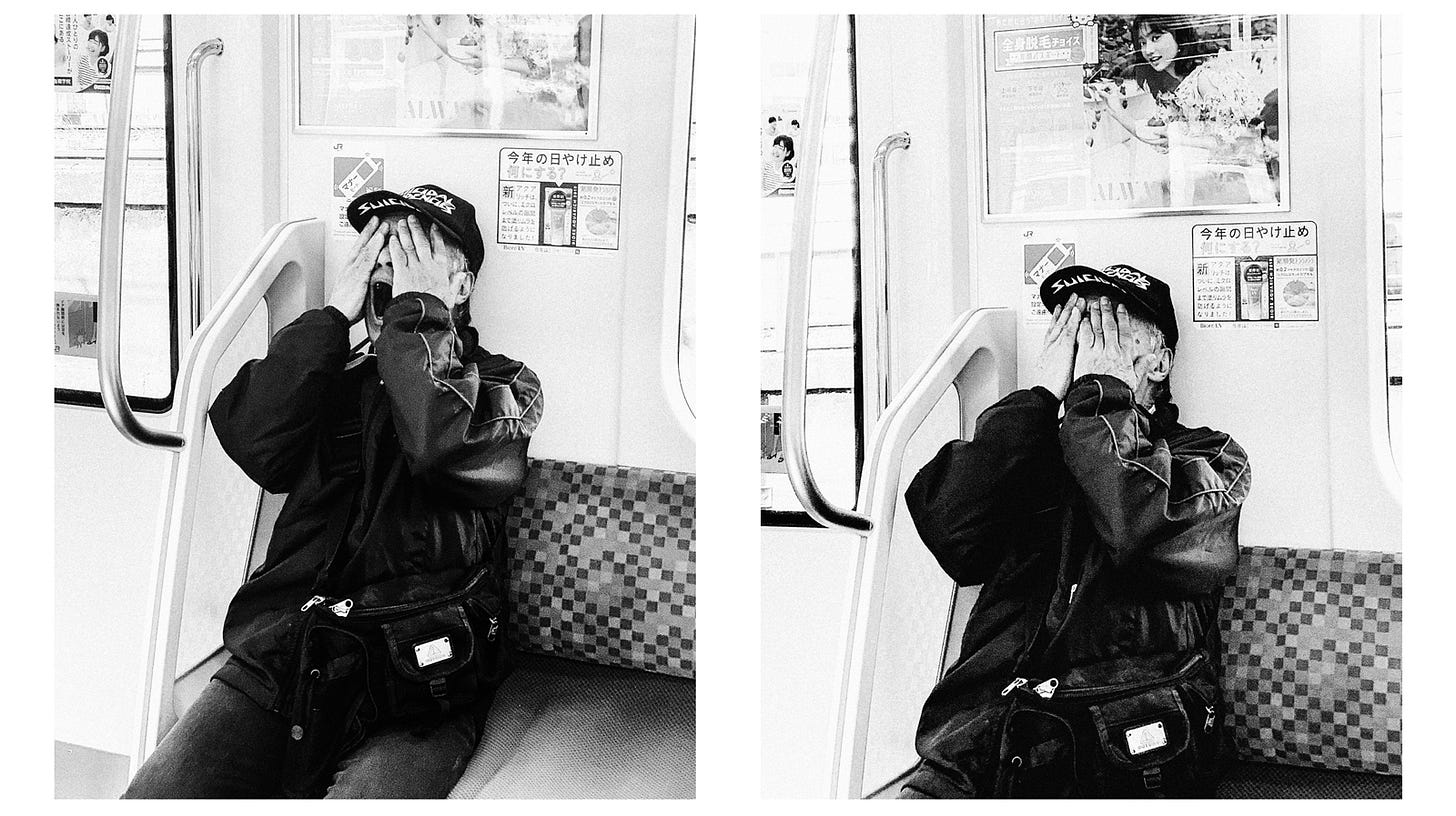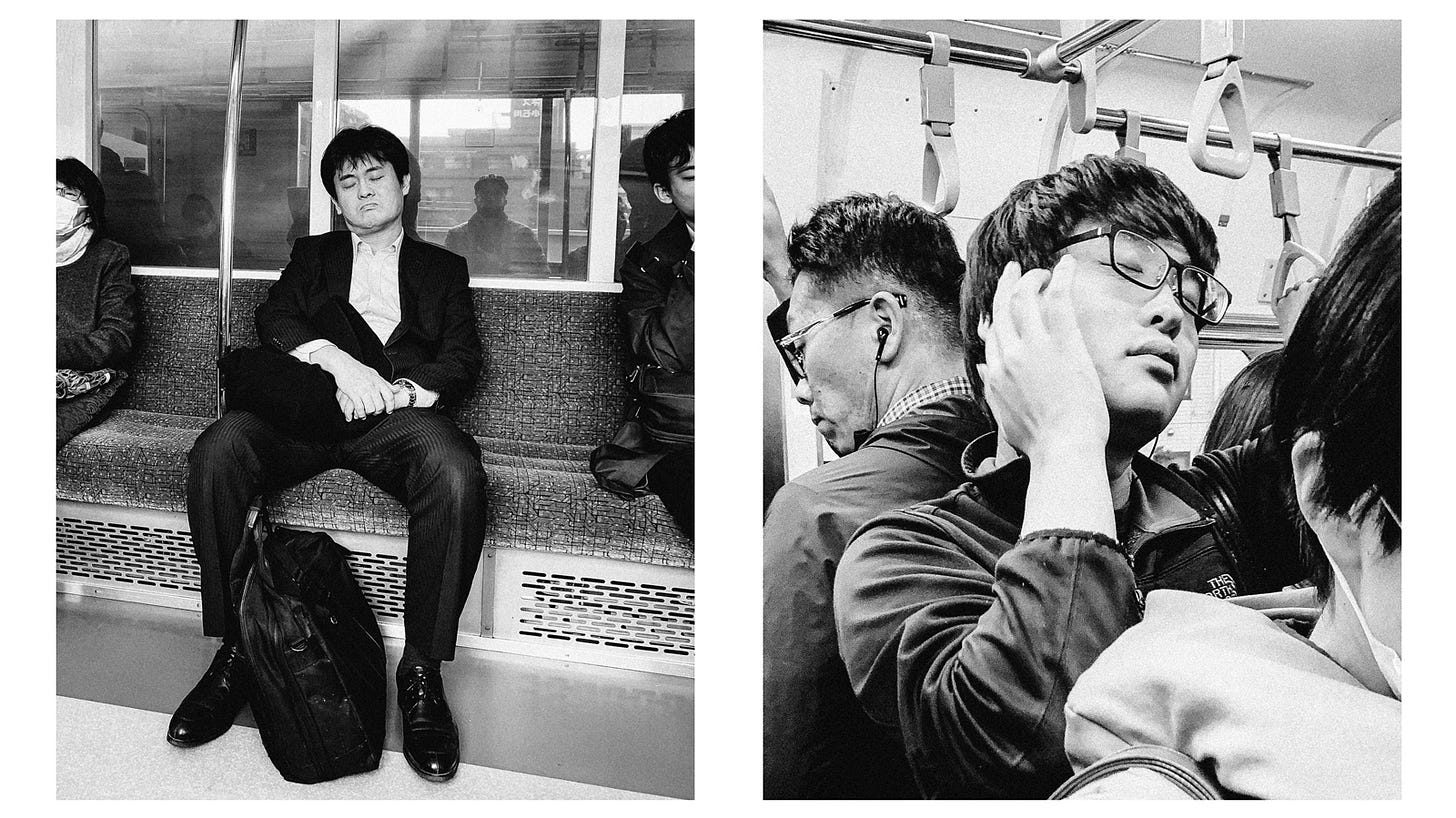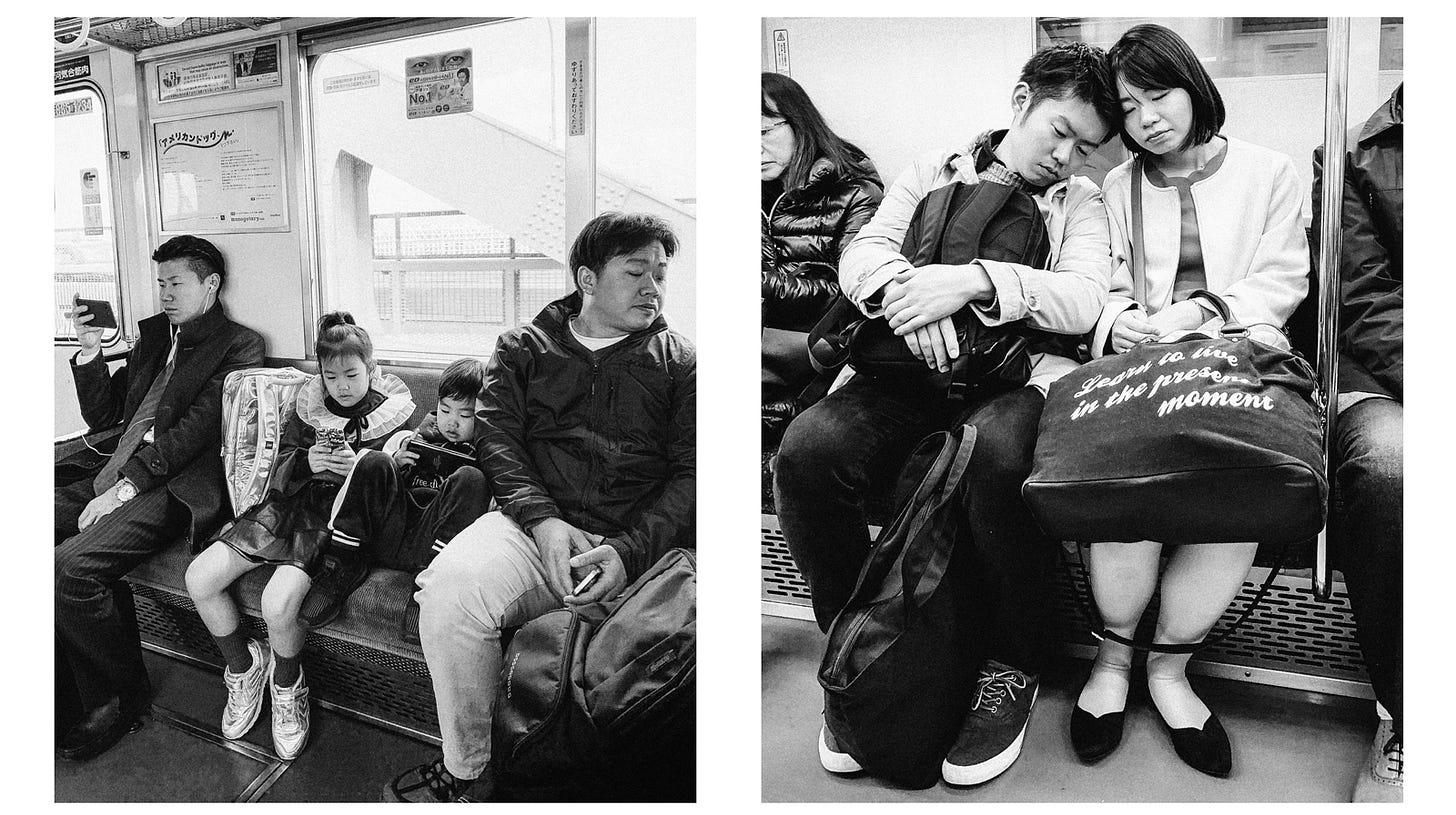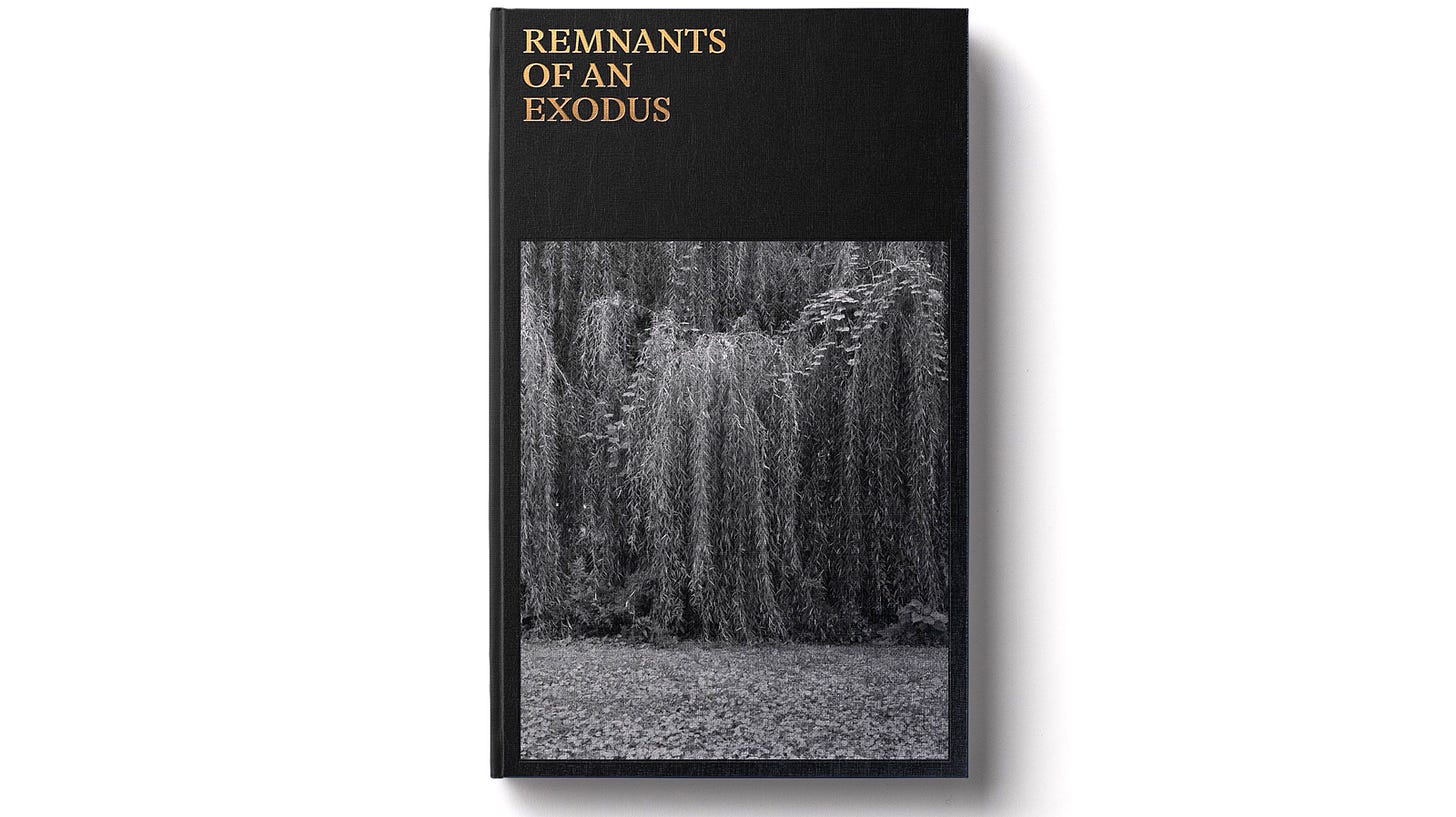Process 023 ☼ Tokyo Commute, Shooting From The Hip.
Giveaway: Al J. Thompson's book Remnants of an Exodus
Dear friends,
Thank you for your great responses to last week’s newsletter. I stated that my 2021 goal for Process is to help inspire 1000 photographers to make a project they are proud of. You’ve already shared great ideas and in-progress work, keep ‘em coming!
Today’s letter is a look at a street photography project I worked on in the Tokyo subway system over a one month period in 2019. Plus a short “Notice” update!
For this week’s giveaway my pal Al J Thompson has made available a copy of his new book “Remnants of an Exodus”. I just ordered my own copy and can’t wait to see it.
Off we go to Tokyo!
Commuting In Tokyo
I landed in Tokyo on March 2nd of 2019 after a whirlwind National Geographic Traveller shoot in Seattle. I had to capture 30 locations in a matter of three days and it was supposed to look like summer. Not so easy in Seattle in March!
After my last shot I rushed to the airport for a long intercontinental flight, including a big time zone shift, so you’d think I’d be exhausted upon arrival. But there’s just something about Tokyo that energizes me, every time. So I start shooting right away.
Every day I’d hop on the subway at Ōtsuka Station in my quiet Minamiōtsuka neighborhood in Toshima ward. I’d make my way across the city for meetings, photo walks, and to visit all the amazing camera shops. As I maneuvered the vast subway system I realized that, photographically speaking, the journey itself was just as interesting as my destination but I was having a hard time figuring out how to document it best. So much movement, so little room, such harsh light.
Tokyo’s combined subway system carries eight million daily passengers to their destinations via 278 stations and 300km/190mi worth of train tracks. In other words, it’s the perfect location for people watching and street photography.
I ran into a challenge right away. I did not bring a quiet, unobtrusive camera on my trip. I knew couldn’t submit these poor sleepy commuters to the thunderous sounds of my medium format shutter and even my SLR would annoy. I also didn’t have any lenses quite wide enough to handle the sardine-like circumstances on the busier trains.
Then I remembered my podcast-listening Instagram device was also a camera that allowed me to shoot wide, from short distances, and with a solid auto-focus. It even let me use the volume controls as my shutter button so I could shoot without looking.
Shooting from the hip, without looking through the viewfinder, is typically a technique used by street photographers who use a zone focus system and shoot with range-finder cameras. A classic setup for this is a Leica M camera with a 35mm lens, set to f8 so everything between 8 feet and infinity is in focus. It’s a super fun and fast way to shoot.
Thanks to technological progress and the brilliant team behind the iPhone camera, you can transfer this “shoot from the hip” concept to mobile photography by relying on the iPhone’s surprisingly accurate facial recognition and auto-focus features. Try it out, you don’t even have to look at the screen, just aim it at a friend, click, and nine out of ten times their face will be perfectly in focus.
Thanks to apps like Halide you can even shoot in RAW format, which means you can crop and edit the images to create the exact look you desire. Isn’t that cheating tho? No, don’t be silly! It’s about the power of the story you’re telling and the emotion you can evoke with your photos. The camera is just a tool to get there.
Takeaways
Some things I took away from a month’s worth of documenting my Tokyo commute:
The best camera is the one you have with you. — Could I have taken better photos with a range-finder camera? Likely yes, but that wasn’t an option. Use what you got and you will learn, grow, and get a few shots you love.
Shooting from the hip means more bad photos. — It takes time before you develop a sense for how and where to aim your phone (or camera). This means you will miss many shots and feel frustrated about it. It’s a learned skill and it will take time. Keep going until you feel in tune!
Editing is part of photography. — There is a lot of work to do after you click the shutter. Don’t limit yourself by thinking that the way the image comes out of the camera is its final state. Cropping is your friend, and so is editing.
A wide lens is great for up close street photography. — The iPhone lens is equivalent to a 26mm lens on a full-frame camera. Many classic and current street photographers consider 28mm or 35mm the ideal so the iPhone is close.
Use your volume controls as your shutter button. — Fast, quiet, and it removes the need to look at your screen.
Use a fast shutter speed. — If you’re using a camera rather your phone, remember people move fast during their commute so try to shoot no slower than 1/250 if you can get away with it. The faster the best to freeze action moments.
I realize there isn’t much commuting going on at the moment for most of us, but even a trip to the grocery store can be a good time to give this style of photography a shot.
Notice Book Update
Dan and I have been checking things off our book making check list with gusto. This week was an exciting one. I finally got to meet Sebastiaan of Colour and Books in person after many emails and phone calls. Here he is leafing through the “Notice” mini dummy book to get an idea of the flow and feel of the story we’re telling.
Sebastiaan is a lithographer, which means that his role on the “Notice” team is to make sure that the photos on the pages of the book are faithful translations of the original images. This requires extensive knowledge of paper types, ink, and how they interact.
Different types of paper handle colors, contrast levels, and sharpness in very different ways. Sebastian is helping us to make all the right choices so the book comes out just the way it was intended. We’re only a couple of weeks away from pre-order!
That’s it for this week.
Keep shooting and take good care of yourselves and others.
Wesley
Process Giveaway!
“Remnants of an Exodus” is Al J Thompson’s first monograph, and a love letter to his second home of Spring Valley, a once thriving Caribbean immigrant community under threat of gentrification, just 40 minutes from New York City.
Al and his publisher Gnomic Books are currently running a pre-order campaign and one lucky Process reader will be able to win a copy right here.
To enter email me at hello@wesley.co (please don’t reply to this note but send a separate email) before 11pm EST on January 27th and answer the following question:
What is a belief that you currently hold about photography that is limiting your growth as a visual storyteller? (Example: cropping is cheating or digital isn’t real, etc.)
One winner will be randomly drawn and receive the book when it’s officially out. This giveaway is for Process subscribers only. Subscribe by clicking the button below:
Make sure to show Al J Thompson some love on Instagram and check out the pre-order page for this book on Gnomic’s online shop.
Congrats to Process reader Lea Blagojević who won last issue’s giveaway and will receive a gorgeous Kosmo Kosmik Film Box.
Would you like to support Process? Great! Tell your friends about it. Just click below:
If you’re a new reader, browse the Process archives here.
Process is a weekly letter from Wesley Verhoeve.
Follow along at @wesley.

